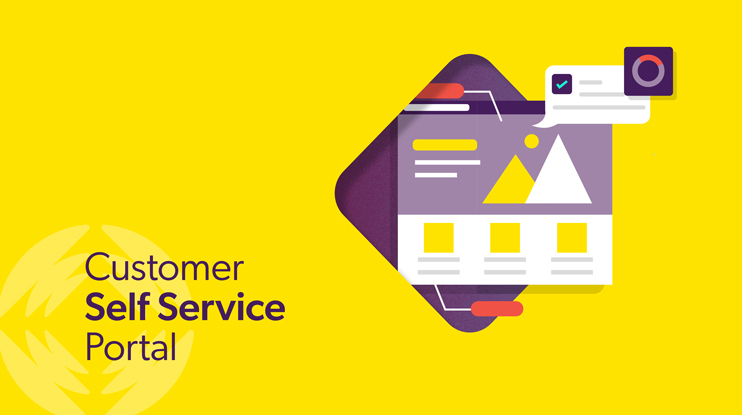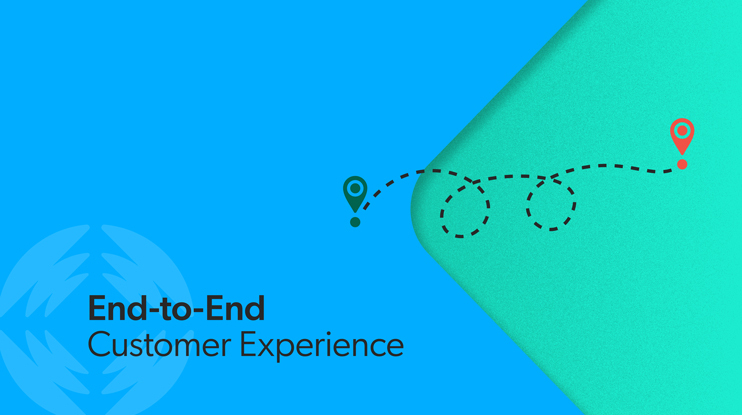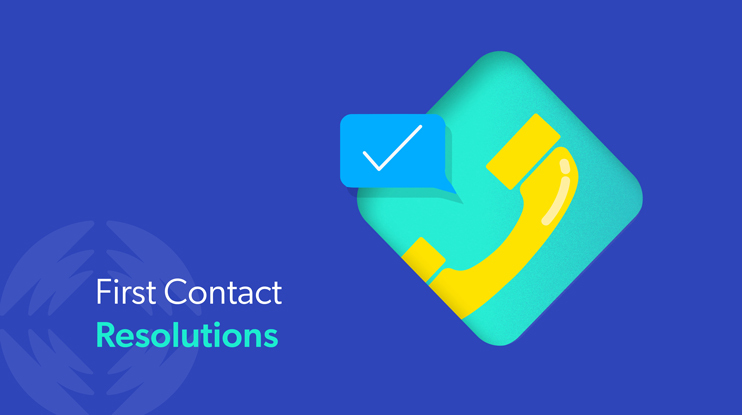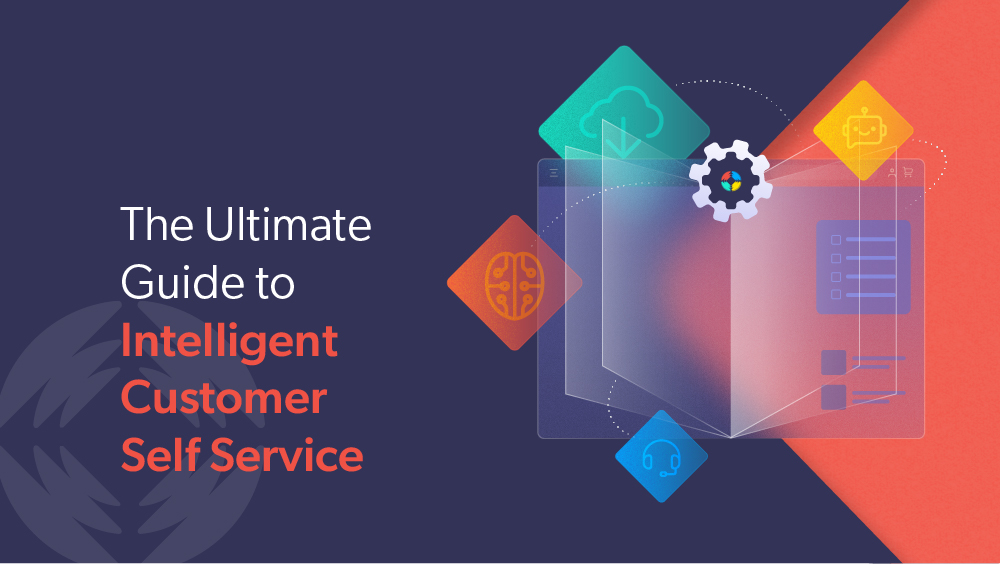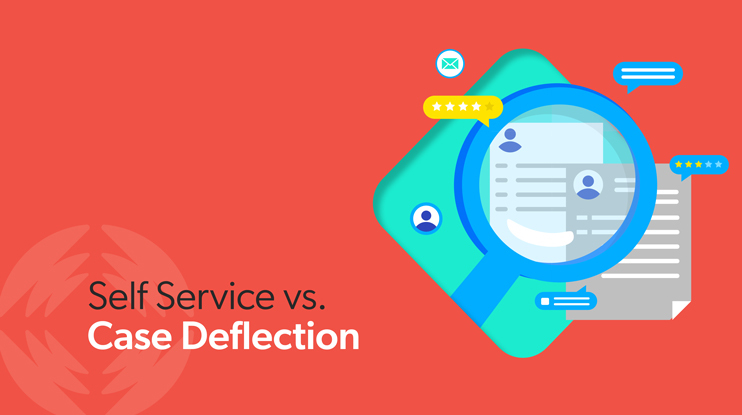Everyone wants their customers to be happy, right?
After all, if they don’t feel taken care of, they can easily move on to a competitor’s product or service. “In fact, 72% of customers will abandon a brand’s site after a single negative self-service experience, often choosing to go to Google or a competitor instead, according to our 2025 Customer Experience Relevance Report.
It’s not enough to offer a website and hope your customers find what they need.
Ask yourself, are you missing out on the benefits of a customer self service portal? Especially one that utilizes generative AI?
Portals can improve customer satisfaction by offering immediate support. And they can streamline the process of sending unresolved issues to the human support team when appropriate.
What Is A Self-Service Portal?
Acustomer self service portal is a site or app that offers information about products and services. Often, they’re geared toward issue resolution, but self service portals are also a great source for customer education.
These portals often offer features like a search box where they can ask a question.
Customer self service portals, also sometimes called a help center or help desk, can offer links and assistance to human customer service representatives.
But the general aim is to empower customers to seek out a resolution on their own, on their own time, and to their own satisfaction.
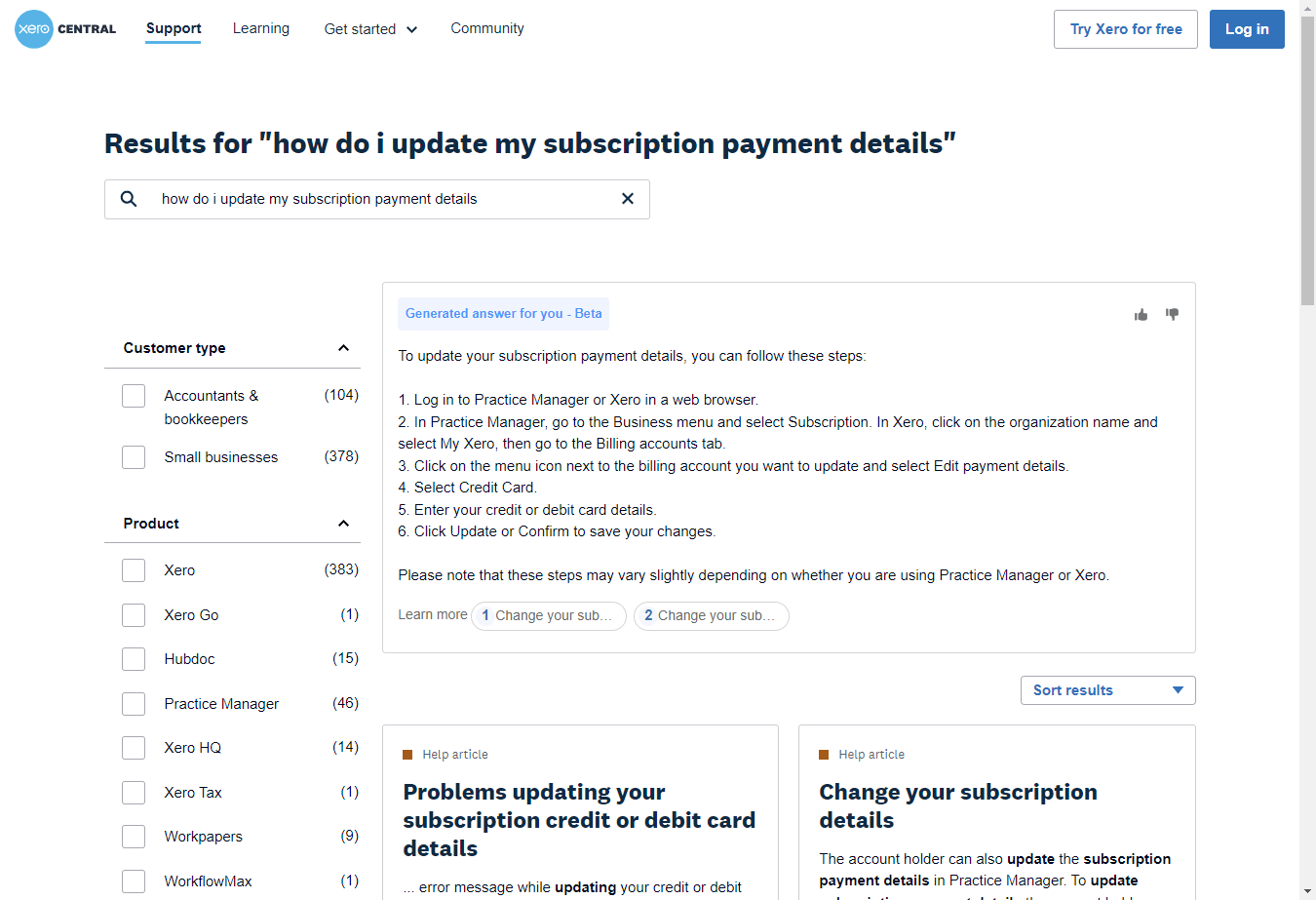
While this might make you think of case deflection, pushing customers away from support shouldn’t be the focus of your self-service offering.
Instead, your self-service portal should complement your customer care center. It’s only when you combine self service support and live assistance do you achieve that perfect balance to meet customers right where they are.
This ensures a greater overall customer experience, balances the caseload for your support teams, and brings more value to your business.
Why Is A Self Service Portal Important?
1. Customers like to be independent.
Millennials and Gen Z are more likely than other generations to research something online before turning to other, more traditional sources for help.
If your self service option can support this desire, you’ll find younger shoppers to be at ease when initiating customer requests and less likely to drop you if they can’t get the job done.
More and more, people want to problem-solve independently, and a customer service portal lets them do that.
2. But they can still access human help, too.
Self-service is great for simple problems that have documented answers. But not all issues are simple or documented.
While a good self service portal is still focused on “self,” it should include an easy and obvious way to quickly get a live support team agent if the customer prefers.
3. Customers like to learn.
Portals with how-to videos and guides can do more than solve issues. Customers love knowledge, and you can support this with a strong knowledge management strategy.
Your self service portal can be a great educational tool to help customers understand how to get the most out of a purchase or gift. Plus, they can learn about other products and services that your company offers.
In addition, your portal can proactively ensure they have fewer problems down the road, now that they know what the solution is! This contributes to long-term customer satisfaction.
4. Self-service attracts site visitors.
If you handle your SEO correctly and make it easy for influencers and other authority sites to share your solutions, you’ll find your support pages (like your customer community, community forum, or knowledge base) to be a destination all their own.
Bloggers, for example, are known for sharing quick tips and advice on how to enjoy top products, and they often link to the support pages of these brands.
And with the right SEO, the search results that show up for a great product or service solution (which may end up as a search snippet or other SERP) might even bring more visitors your way.
5. Easier to offer low-cost, personalized support — at scale.
Did you know that 85% of millennials are more likely to buy something that is personalized to their needs or habits?
Customer self service can maximize this trend by offering them an incredibly personalized support experience.
From a personalized greeting to offering suggestions for resolution based on purchased products, there are many ways to meet customers on an individual level.
Why Does My Self-Service Portal Need Generative AI?
Generative AI is a type of artificial intelligence (AI) that creates something new and original from existing data using algorithms. And if you’re saying to yourself, oh, we already have AI — well, not like this.
In our annual survey of 4,000 consumers, we asked respondents what would make their digital self-service experience better.
The most popular option?
Answers available right in search results.
And that’s what generative AI can help your business provide.
Rather than search a list of links for the answer, generative AI brings solutions right in front of customers. Xero, a Coveo customer since 2017, is the first to have Coveo Relevance Generative Answering live.
In just six short weeks, they’re already seeing results: a 20% decrease in search sessions needing additional customer experience support since its launch in October 2023.
3 Customer Self-Service Portal Examples
If you already have a customer portal, you might have an idea of what they look like.
To be clear, they can be as unique as the company creating them and can include a wide variety of plug-ins, tools, and integrations that improve the customer experience.
Some sites you can reference include:
- Tableau, a business analytics and intelligence software company, uses Coveo’s relevant search in its customer self service portal to give better answers to individual customers based on context and browsing history.
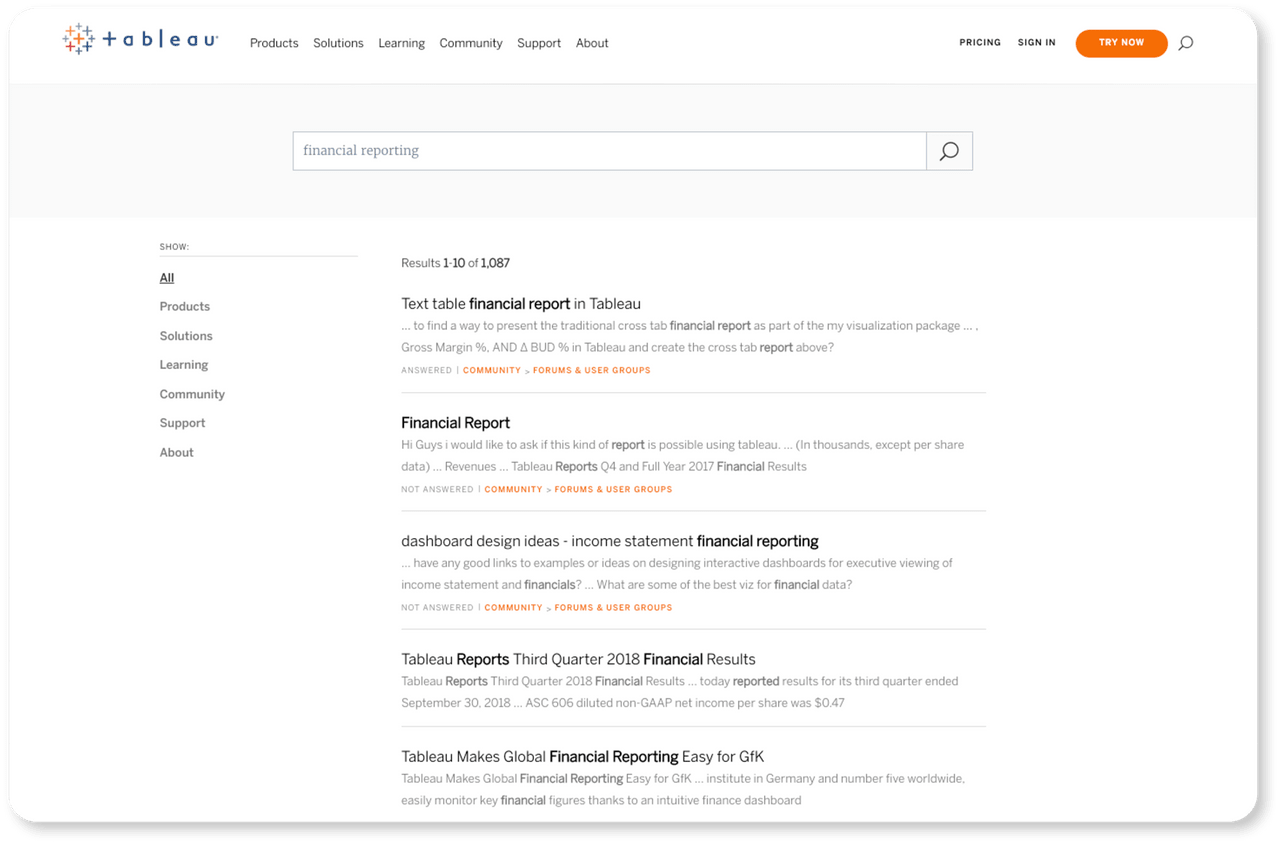
- VMWare offers its 75,000 partners a better way to find self serve onboarding content and sales enablement content by personalizing it based on their partner type.

- Salesforce’s AppExchange uses recommendations and then suggests applications that are most relevant to visitors whether they are authenticated or unknown.
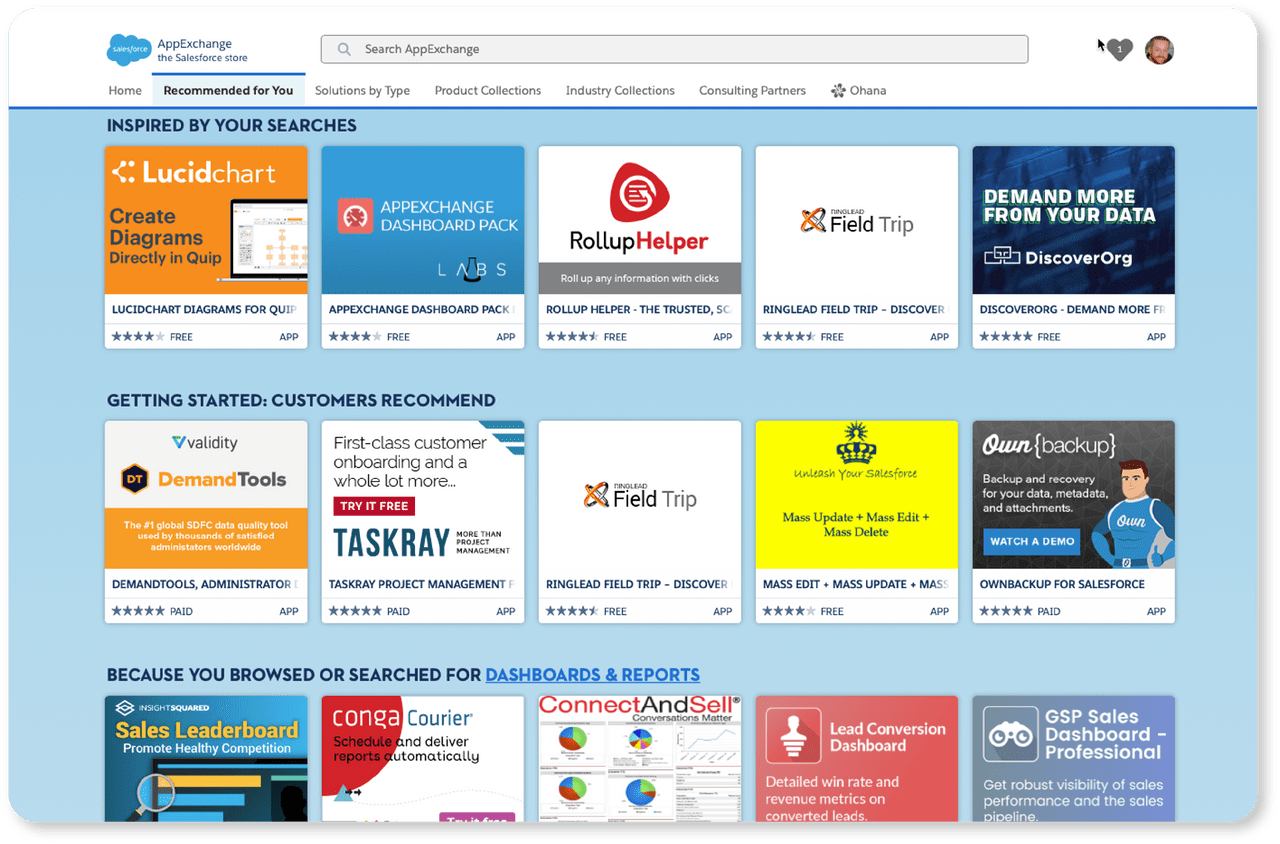
3 Common Self Service Portal Challenges (+ Solutions)
Here are a few challenges and how you can solve them.
1. Content (and thus answers) aren’t findable
The customer search of years past was siloed, meaning it came from a single library or source.
If a customer needed to find out something that didn’t exist in this singular repository, they would come up empty-handed.
The next step in search technology is federated, something slightly better than siloed but still lacking when compared to what customers want. While federated search can send search requests to multiple search engines and databases within that federation, nothing is unified, and results may often be irrelevant or overwhelming. (Imagine putting in a search term and getting not one, but a dozen bad or confusing results!)
To make matters worse, federated searches can be based on very structured and specific search terms that may or may not match the intent of customer queries. For example, if they use a regional phrase to search for an item, the search engine might not know how to find what they want.
Combine the problems of limited search data, too much irrelevant search data, and search that doesn’t recognize nuance, and you have a lot of frustrated customers.
Solution: Centralize querying multiple content sources with a unified index
Unified search connects all your databases as federated search does. However, with unified search, the best results rise to the top. This is based on what others have found useful, enabling you to shift from being reactive to proactive to customer needs.
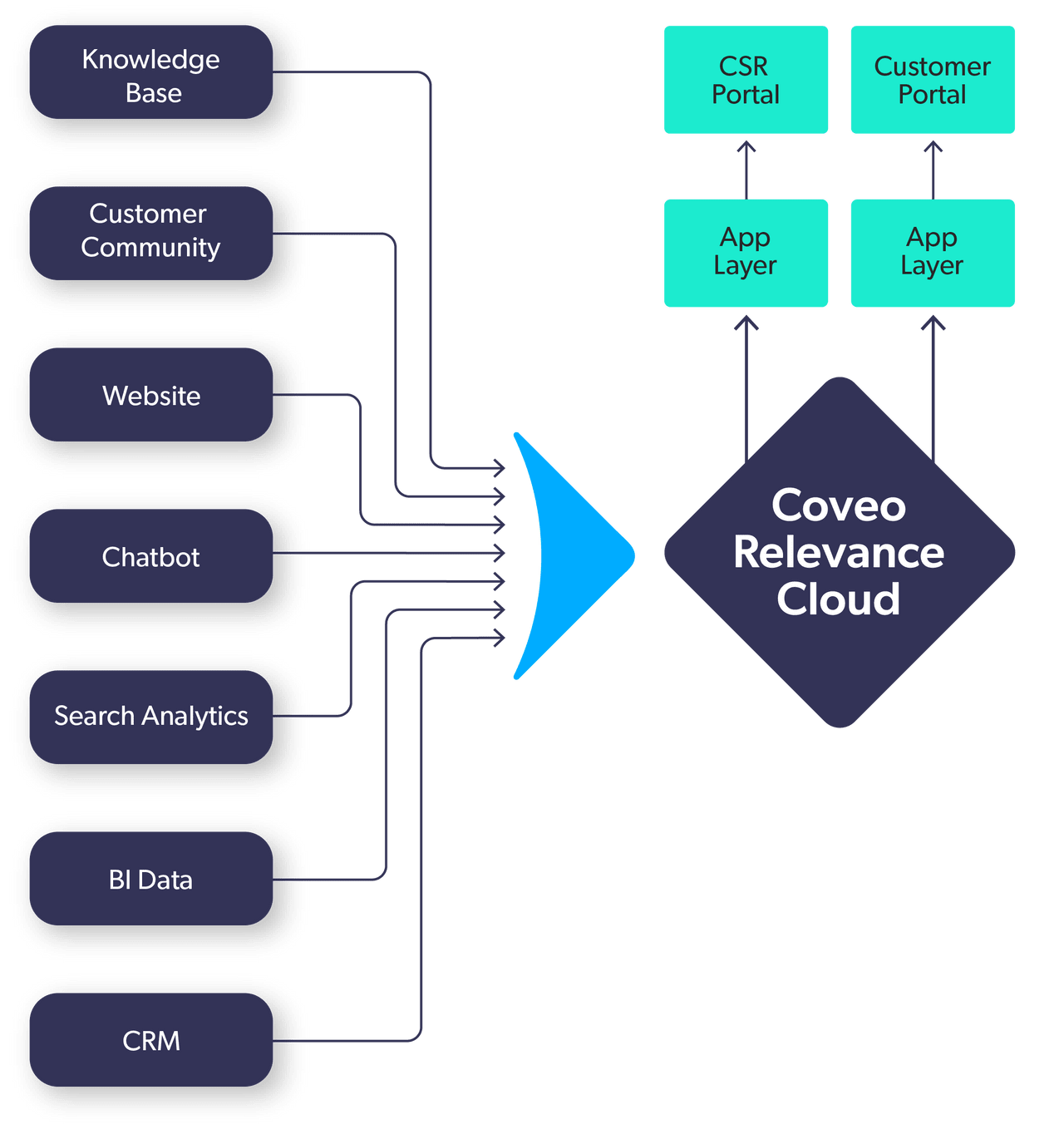
To further enrich your self-service experience, allow customers to filter the results. Configurable facets allow them to take results and refine to the best one for them. To go along with the DIY theme of this article and the nature of self service, empowering customers to shape their search results can help avoid the submission of a support ticket and enable implicit case deflection.

2. Search relevance is lacking
Centralizing content is step one, but no customer wants to sift endlessly through an overwhelming number of potential answers.
By taking into account who they are, where they’ve clicked on your site, and the products they’ve purchased in the past, you can tailor self-service portal search experiences to a unique individual — and replicate this 1:1 experience at scale.
It’s important to keep in mind that as your customers evolve throughout their journey with your product or service, their perception of search relevance evolves, too. Your relevance is driven by the situation a customer is in at that given moment, the challenge they’re facing, and the ability to overcome it; in other words, it’s contextual.
Your portal needs to be relevant at every step of the customer journey.
Solution: Surface content within a customer’s context using AI
Knowing what will be contextually relevant from one customer to the next is all but impossible without sophisticated AI-powered technology.
AI not only analyzes your customers’ profiles and actions but also identifies behavioral patterns to respond accordingly.
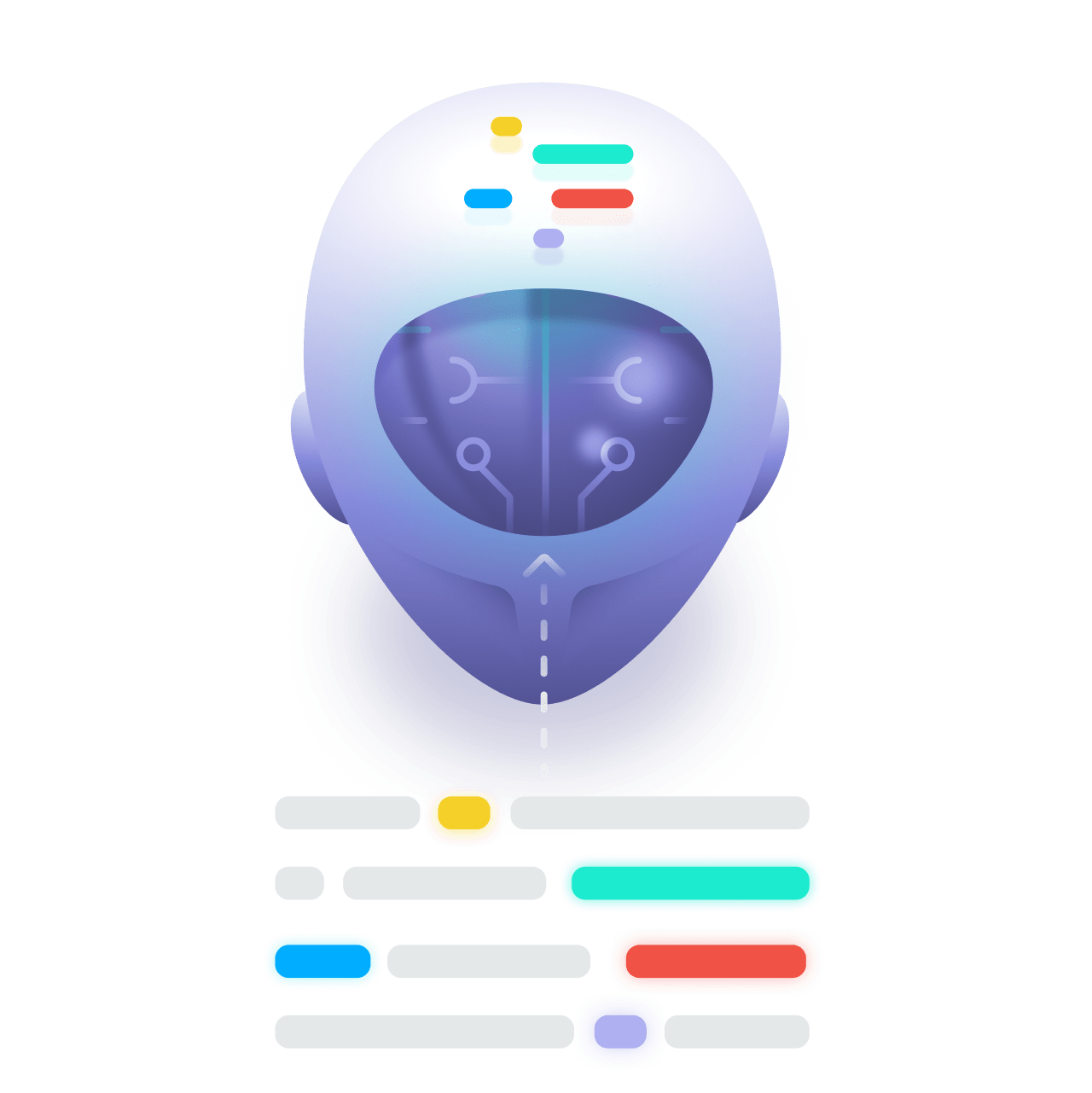
By understanding how a customer has searched, what they’ve clicked on within your site, where they are in their customer journey, and what actions people like them have taken gives you a better understanding of what each unique customer hopes to achieve.
You can then apply this information to implement query suggestions, recommendations, and personalization in your support portal.
3. Poor or No Customer Insights
Without analytics or a way to track your customer’s interactions with your self service site, you’re incapable of seeing the bigger picture of their support journey.
You could be getting valuable insights that tell you what content meets customer needs best, how your customers engage with it, and what content gaps you could plug to improve the customer self-service experience.
Instead, without analytics, your customer journey is a black hole and you’re unable to help them achieve self service success.
Furthermore, your content strategy is little better than a shot-in-the-dark because you’re not making content decisions based on data.
Understanding customer behavior pays off, literally. Cross-selling and upselling are key components of a customer-centric strategy, as it shows you know them and want to help them.
However, to be effective, you need to have a solid understanding of your customers and their needs before you suggest related training opportunities or offers.
Solution: Choose a search platform with built-in analytics
A search box is a two-way street — not only can customers look for content, but you can see what they’re finding (or not finding).
This means your customer self-service portal becomes better at providing customers the answers they need — which not only improves the user experience but also frees up your agents to tackle problems with more creativity, cutting down on service costs, and increasing the potential for your contact center to become a profit center.
So it’s a no-brainer to select a search platform that offers a robust analytics dashboard. From revealing gaps and most-consumed content to teasing out the full customer journey, data allows you to better understand the how, what, and why of your audience.
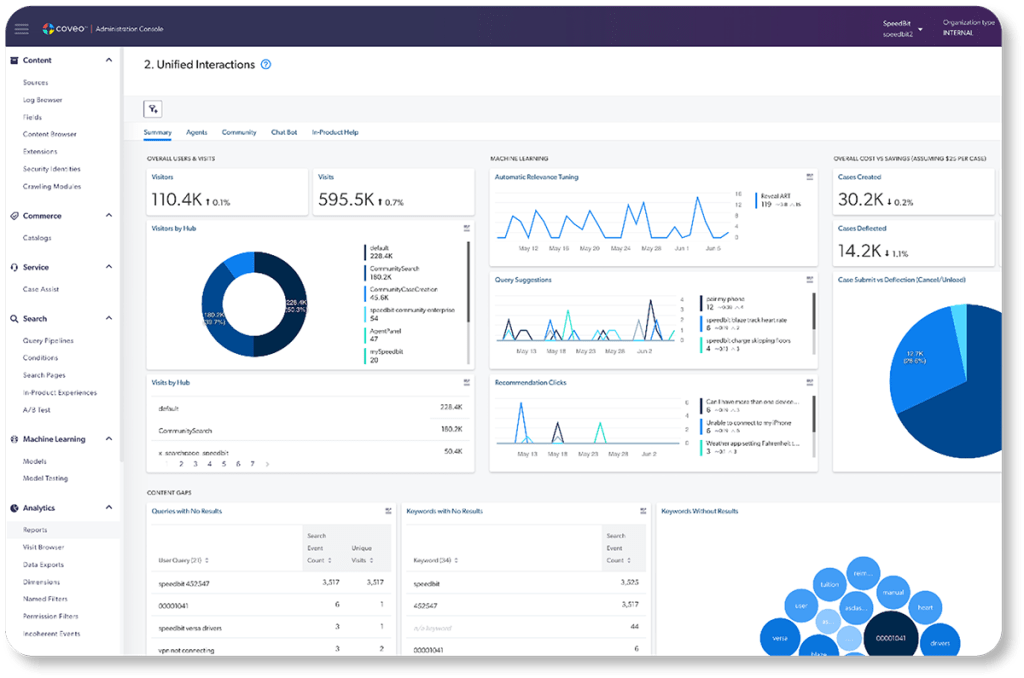
Dig Deeper
For decades, customer service and support leaders have prioritized the importance of First Contact Resolution (FCR) as a way to balance service quality with service efficiency. But leading organizations understand that they must gaze into the future to fulfill customer needs before a support request is even submitted.
Achieve Next Issue Avoidance with our complimentary white paper, Using AI to Deliver Effortless Self-Service Resolution.
Or if you’re curious about the real-world impact of self service, get the scoop on how Connectwise achieved a 45% increase in case deflection and a 28% improvement in clickthrough rate with Coveo.

